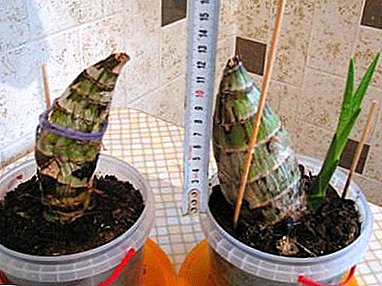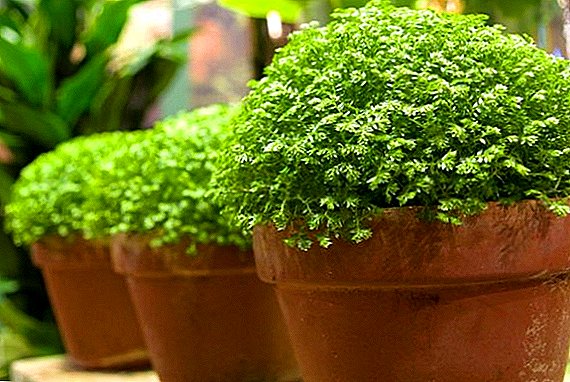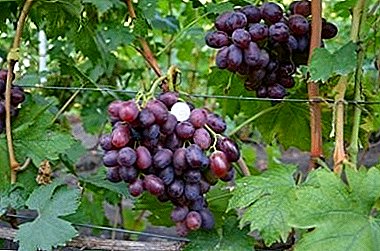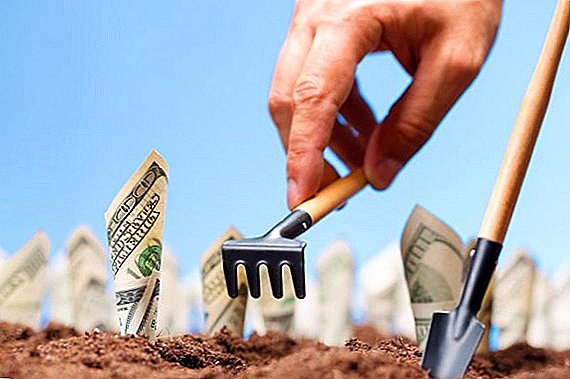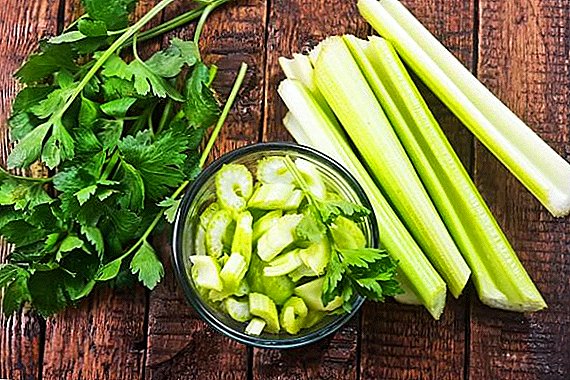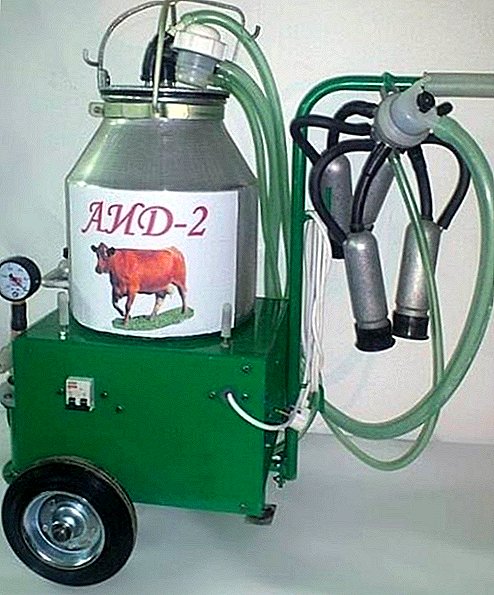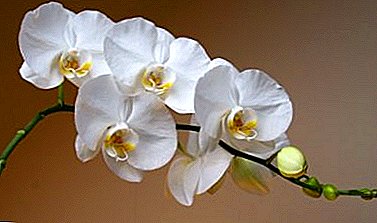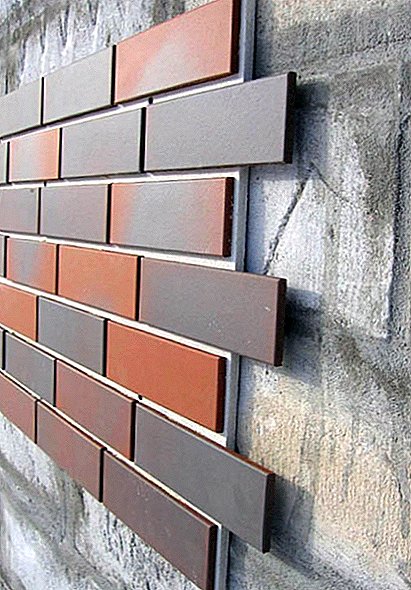 The construction of a private house consists of different stages of construction. The foundation is laid, walls are constructed, floors, roofing and, of course, the house is covered. Many owners leave the walls without finishing, preferring the "natural" appearance of the house. This is a wrong tactic, because the covering is not only the decoration of the house outside, but also an important protective part of the whole structure. This article will discuss the need for house cladding, various materials for cladding facades and the principles for their selection.
The construction of a private house consists of different stages of construction. The foundation is laid, walls are constructed, floors, roofing and, of course, the house is covered. Many owners leave the walls without finishing, preferring the "natural" appearance of the house. This is a wrong tactic, because the covering is not only the decoration of the house outside, but also an important protective part of the whole structure. This article will discuss the need for house cladding, various materials for cladding facades and the principles for their selection.
What is needed
The first cladding or lining protects the main supporting structure from the effects of adverse weather conditions. It extends the life of the whole house, as it becomes a barrier to dampness, sun exposure and sudden temperature changes.
Sheathing is also designed to give the house an aesthetic appearance. Not all modern materials with good construction characteristics guarantee a beautiful appearance of the finished structure. Another function of the skin - restoration.
Finishing materials can give the old building the appearance of a new structure and increase the period of its operation.
Important! There are two types of exterior walls. They are called "wet" and "mounted". Wet involves painting, hinged - installation of plating on a metal frame. Hinged finish is more expensive, so count your financial capabilities.Video: options for finishing the facade of the house
Choose wisely
When choosing a facade material, many people are guided by its value. The problem is that cheap materials have low wear resistance and will lose their aesthetic appearance in a few years after application. Therefore, when choosing materials, be guided by the following characteristics.
Building architecture
It determines the style of the exterior. It would be unwise to sheathe a classic mansion with sandwich panels, and a country house with siding. For each style there are the most suitable materials.
Similarity to natural materials
Neoclassicism or neo-baroque do not require an exact display of stone or wood motifs in decoration. But if you want to give the skin an interesting texture, then pay attention to the materials that repeat the natural patterns. They will give your home a country style. 
Resistance to external influences
Quality materials always provide protection from excessive moisture, temperature extremes and insolation. They are resistant to fading, drying out and breaking down.
We advise you to read about how and with what to warm the base of the house outside, how to make a blind area at home with your own hands.
Vapor permeability
This is especially true of plating, which is adjacent to the walls close. If it is impermeable to air, the materials of the supporting structure will begin to "choke" and become covered with mold at the junction with the skin, and then from the inside. 
Degree of durability
This item is closely related to the price, because cheap veneer serves for three to four years, and high-quality expensive materials have been preserving their appearance for decades.
Ease of care
All ribbed, porous materials are difficult to clean, since dust and small dirt are clogged in their pores and crevices. For such a decoration you need to purchase a special washing machine and regularly wash the entire facade so that the house does not look sloppy. Smooth materials that imitate the surface of a stone, glass or ceramic brick, on the contrary, do not need special care and are easily cleaned of dirt.
Easy installation
Laying any facade materials requires certain skills. Nevertheless, it is very difficult to spoil some materials, such as wall paneling or sandwich panels, while only real craftsmen can correctly stack the clinker or artificial stone. 
Facade finishing materials
There are many types of facade cladding. To select the appropriate material for a particular case, you need to know the features of each of them.
Important! Solid materials are more durable than those that are collected from crumb and mortar. If you have the opportunity, make a choice in favor of natural materials or their cast synthetic counterparts. Concrete and cement slabs - fragile finish.
Siding
This material is easy to install. It is inexpensive and very popular among homeowners. Siding imitates natural textures with ease and gives the house a look of expensive without excessive material costs.
There are several types of it: wood, metal, vinyl and fiber cement. All of them have a different load on the facade of the house, so the choice of material must be coordinated with the professionals.
- Wooden material eco-friendly and breathable. It does not make the house heavier and has excellent insulating properties. Its negative features include low resistance to deformation, weather conditions and the need for constant care.
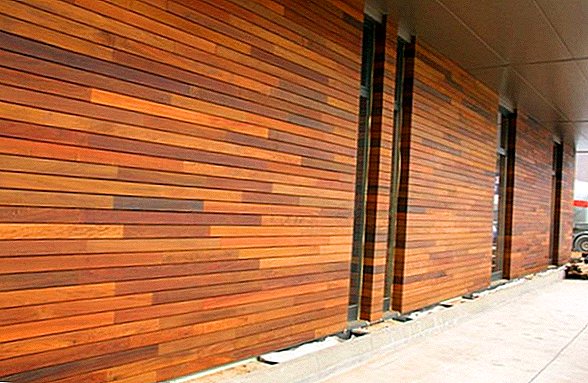
- Metal siding it can be aluminum (the lightest), steel (the most durable) and zinc. The zinc coating is noisy during rain, the aluminum is prone to deformation, the steel is susceptible to corrosion when the special coating is peeled off. Nevertheless, this skin is very durable, strong and resistant to adverse weather conditions.
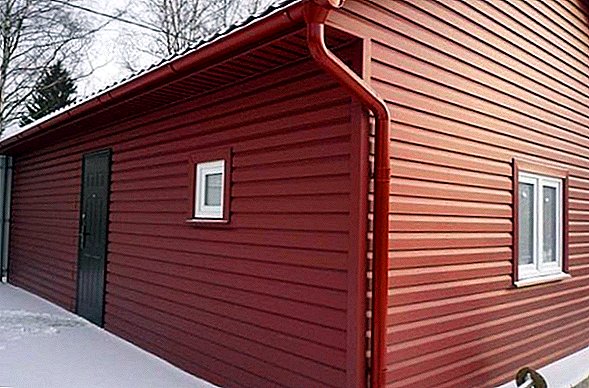
- Vinyl finish - These are thin and lightweight PVC panels. It effectively imitates any texture after pasting with a special coating, which is why it is widely used for covering houses. It is a heat-resistant material that does not pass moisture to the materials of the supporting structures, but it is deformed easily and has a short lifespan in case of improper installation. Panels expand in the heat, shrink in the cold and begin to fall out of their nests.

Did you know? Pine wood most often goes for finishing of houses with a block house and clapboard. Sawdust and needles, as a by-product of the woodworking industry, are sent to the production of ethyl alcohol and dyes. So, from one ton of pine needles it turns out to drive out more than 250 kg of high-quality furniture dyes, and a ton of pine sawdust replaces two tons of first-class potatoes in the production of ethyl alcohol.
- Fiber cement plating rarely used, although it is an environmentally friendly material made from sand, cement and special fibers. It looks much more profitable than other siding linings, is easier to install and is free from all the above disadvantages. It is not necessary to care for fibrotsement. It practically does not get dirty, is not afraid of mold, easily tolerates bad weather, and is resistant to chipping and impact.

Block house
This sawn timber is a type of lining. It is made of coniferous wood, at least - from aspen and ash. It has a convex surface on one side and is made from external saw cuts.
We recommend to read about how to make sewage in the house, how to install a water heater, how to make water from the well.
The unique structure of the block house creates an imitation of walls, built of timber. Just like wood siding, a block house needs treatment against tree parasites and water-repellent impregnation.
The bars of the block-house are light, they do not create an excessive load on the carrier materials. They are strong enough to blow and kink, have an aesthetic appearance, but have a high fire risk.  The block house is narrow and wide, the length of one beam varies from two to six meters. An improperly mounted block house tends to collapse, so its installation must be trusted by professionals.
The block house is narrow and wide, the length of one beam varies from two to six meters. An improperly mounted block house tends to collapse, so its installation must be trusted by professionals.
Learn how to choose a boiler for heating, a stove-stove and a long-burning heating stove, as well as how to build a Dutch oven with your own hands.
Facing brick
The main components of this material are limestone, clay and cement. Depending on the proportions of the components and the types of clay used, clinker, ceramics, silicate, and hyperpressed brick are distinguished.
Decorative brick is hollow (with holes inside) and corpulent (cast). It does not affect the appearance, but full-bodied bricks can withstand a greater load compared to hollow bricks.
- Clinker differs from other types of a brick in the increased durability. It is finely porous, therefore it practically does not absorb moisture and due to this does not suffer from temperature changes.
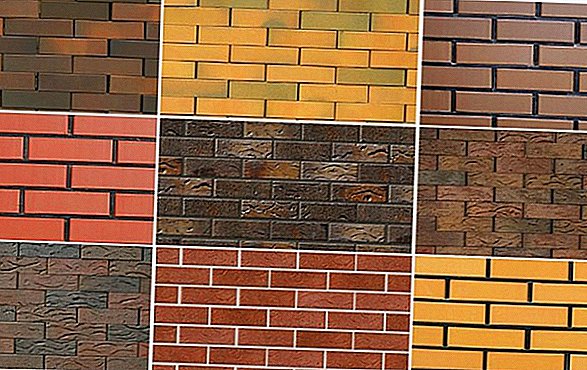
- Ceramics more fragile than clinker, but it can be decorated to your liking. Ceramics are subject to coloring, glazing and give it different textures.
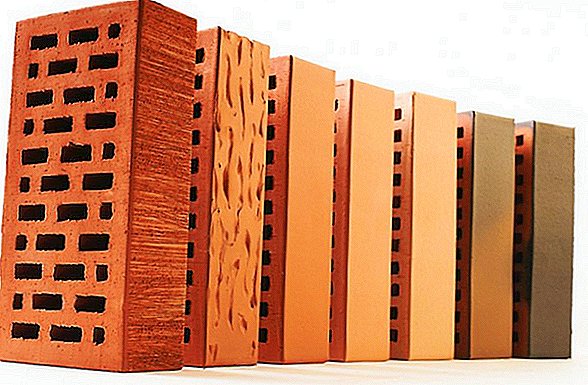
Did you know? For a long time, people living in the Urals region, preferred to use boards and logs made of cedar pines for the construction and decoration of houses. Huge ship pines sawed along and received boards of two-width width, and this is as much as one and a half meters by today's standards! Such boards did not gnaw pests, moths and bugs did not start in pine houses. The amazing properties of such wood are explained by the presence in them of a large amount of phytoncides with a relatively low resin content.
- Silicate - especially cheap subtype of bricks. It has a high thermal conductivity, fragile, needs constant care and has no advantages, except for its low price.
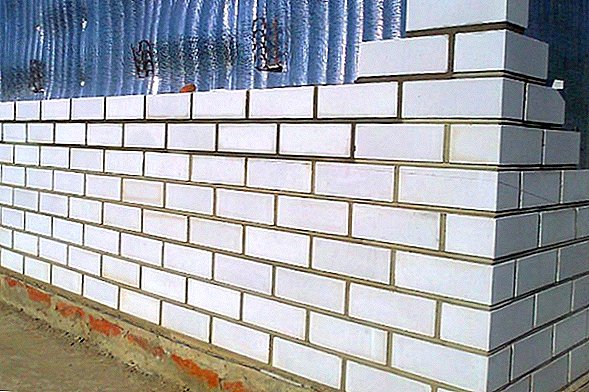
- Hyper pressed bricks compare favorably with other facing bricks with an interesting texture on the cleavage and high frost resistance. Facing with a hyper-pressed brick is recommended to be carried out above the thermal insulation, since its thermal conductivity is even higher than that of a cheap silicate.
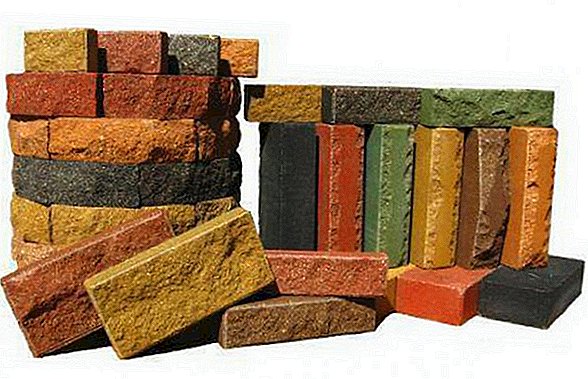
Important! Many materials that are put on a thick layer of adhesive substrates or plaster, place a significant load on the foundation. Consult with a specialist before making a choice of plating in the store.
Decorative plaster
It is applied on top of the main, facade plaster. Depending on the components, it includes mineral, silicate, acrylic, silicone.
- Mineral plaster - the steady and breathing covering. It is not subject to influence of a mold, a fungus, easy in leaving. The disadvantages include low ductility and fragility.
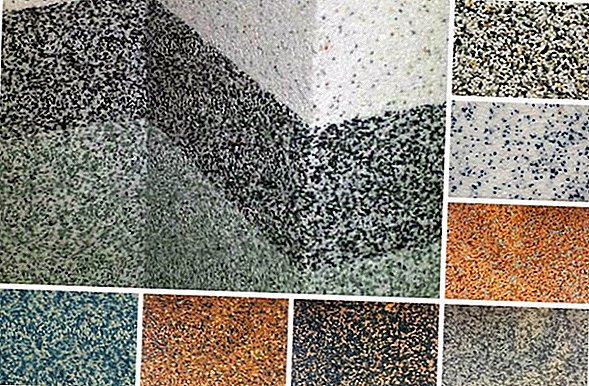
- Silicate plaster consists of special glass and plasticizers. Very elastic, thanks to this, it rests on the facade without cracks and chips to thirty years. Dust-resistant, easy to clean. Under the influence of moisture darkens, but after drying restores color.
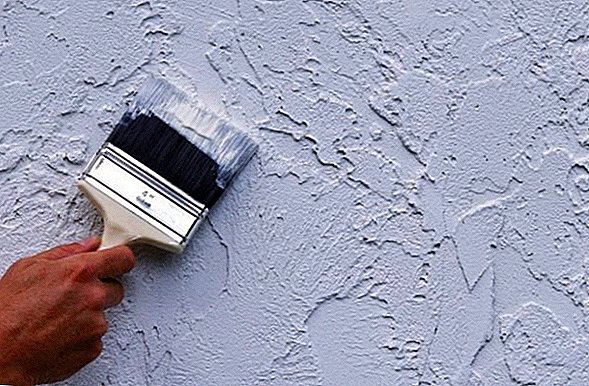
- Acrylic plaster is a particularly resistant coating. Fills small cracks and chips, plastic, therefore does not wear out for a long time. Easy to clean, resistant to adverse weather conditions. Its ability to attract dust and lose color due to this can be attributed to negative properties.
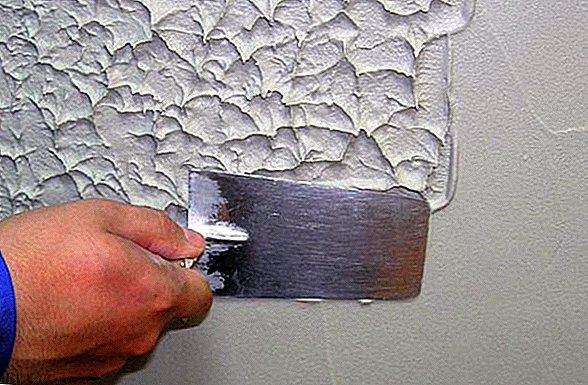
Did you know? The history of the construction of wooden houses with stone trim has more than two millennia. Such improved buildings were found by British archaeologists in the area of Stonehenge and they date to 400 years BC. er The ancient settlers used stone cladding at home to protect the wooden masonry from the influence of the naughty moist climate, regulated by the Gulf Stream.
- Silicone plaster - innovation in the field of facade coatings. Warranty period of operation - more than twenty years. It is not covered with cracks, repels dust and moisture, is easy to clean, and is easily applied to the base plaster. This is the most expensive coating in the segment of plasters.
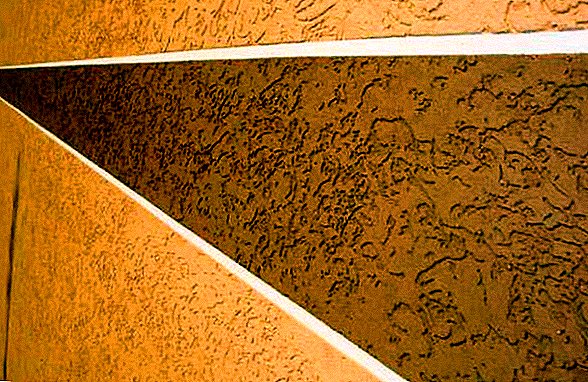
You will probably be interested in reading about how to make a warm floor, glue the plinth, install the sink on the countertop, how to properly rub the seams on the tile, how to put the socket and the switch, how to remove paint from the walls, whitewash from the ceiling, how to glue the wallpaper, how to install blinds on plastic windows, how to sheathe a wall with drywall, how to whiten a ceiling in my house.
Facade tiles
This material undergoes high-temperature firing and pressing, so it is very durable and resistant to the influence of weather conditions. The front tile does not wear out, does not get dirty, does not absorb moisture and does not crumble.
It can be made in a variety of sizes and thicknesses. This is a heavy facing that loads the load-bearing walls. Before using it, you need to consult with professional installers.  Facade tiles are made to simulate wood and stone finishes. It is strengthened with a metallized film and supplemented with polystyrene foam panels when used for insulation.
Facade tiles are made to simulate wood and stone finishes. It is strengthened with a metallized film and supplemented with polystyrene foam panels when used for insulation.
Such tiles are concrete, cement (low cost options), ceramic, flexible and terracotta. Low-cost tiles are easy to change when damaged and are inexpensive, and expensive models have high strength, decorative and serve more than thirty years.
It will be useful for you to read about how to make a gable and chetyrekhskatnuyu roof, how to make a mansard roof, how to cover the roof with ondulin and metal tile.
Facade panels
They are similar to siding panels, are also made from fiber cement and PVC, but are thicker than siding. They are very durable to impact, have high insulating properties and are not sensitive to bad weather conditions.  It is easy to care for the panels, as they repel dust and moisture, they are not deformed during shrinkage. With proper installation, the service life of such finishes is more than twenty years. The panels are produced with imitation of natural materials. They are decorated with stone, wood and brick, but at the same time, the panels have better characteristics than natural materials.
It is easy to care for the panels, as they repel dust and moisture, they are not deformed during shrinkage. With proper installation, the service life of such finishes is more than twenty years. The panels are produced with imitation of natural materials. They are decorated with stone, wood and brick, but at the same time, the panels have better characteristics than natural materials.
Important! Decorative plaster does not like contact with hard brushes and abrasive sponges. To care for the plastered facade, purchase a special washing machine that will clean the walls with a stream of water filed under high pressure.
Sandwich panels
This is a multilayer facing material, which consists of two rigid sheets of carrier material such as metals or magnesite and one soft insulating layer.  Layers are pressed together and turned into a whole structured panel. Mineral wool, fiberglass, polyurethane foam or polystyrene foam are used as insulation.
Layers are pressed together and turned into a whole structured panel. Mineral wool, fiberglass, polyurethane foam or polystyrene foam are used as insulation.
Mineral wool has good thermal insulation properties and fire resistance, but does not tolerate too high humidity. Most often it is combined with galvanized steel. Three other fillers are resistant to high humidity, but at the same time they are flammable, so they are spread over magnesite plates.
A natural stone
The most popular natural material for cladding. Due to its high cost, it is used infrequently compared to synthetic casings. Heavy material that creates an additional load on the facade.
Natural stone is difficult to install, its laying can be trusted only to specialists. After special treatment, it loses sensitivity to dust and moisture, does not crack, does not crumble.  For cladding, slate, sandstone, granite and marble are commonly used. The first two rocks are easy to process, have high thermal insulation, but their strength is inferior to marble and granite.
For cladding, slate, sandstone, granite and marble are commonly used. The first two rocks are easy to process, have high thermal insulation, but their strength is inferior to marble and granite.
It is more difficult to work with these stones, but they look more elegant and expensive. This finish practically does not get dirty, easy to clean and with proper installation serves more than forty years.
Did you know? The oldest wooden building with wooden decoration, which still exists today, is located in the Japanese prefecture of Nara. This wooden temple is called Horyu-ji. It was built in 670 AD er and during that time he served as a monastery, a Buddhist temple, and a school of yogachary.
Fake diamond
It is made from polymeric materials, clay, a stone crumb, sand. The artificial stone is a budget option of natural finishing. It does not look so luxurious, but it has been exploited for years without losing its properties. There are such varieties as clinker, architectural, resinous, concrete and polymer sandstone.
- Clinker stone imitates sandstone and granite chips. After high-temperature pressing, it becomes insensitive to moisture and extreme temperatures, and its textural surface is easy to clean when contaminated.

- Architectural paneling - This is one of the types of concrete stone, but it looks more expensive due to mineral additives and a special shade of light sandstone, which portland cement gives it. This is a facade stone, which is rather fragile to the blow, but with proper installation it does not crumble and does not become covered with cracks, as it is resistant to temperatures. Может темнеть при намокании, восстанавливает свой цвет после высыхания.
- Смолистый камень выглядит как натуральный за счёт того, что производится из натуральной каменной крошки и прозрачных синтетических смол. It is made in the form of slabs of various sizes and thicknesses, surpasses stone finish in its properties, if it contains heavy-duty resins. Very durable and resistant.
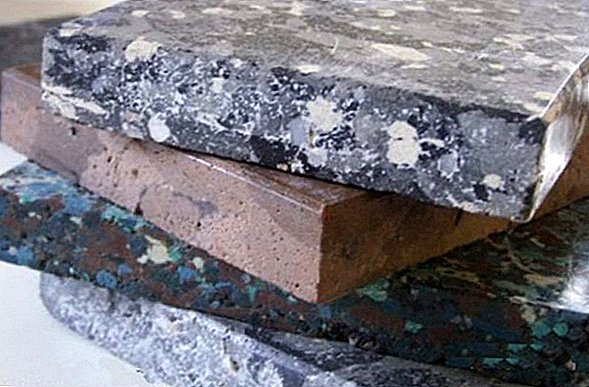
- Concrete finish It is used most widely due to its low cost and ease of installation. A fragile material that is valued for its imitation of a granite pattern. It has low thermal insulation properties, so it must be mounted on top of an insulating layer of mineral wool or polyurethane foam.
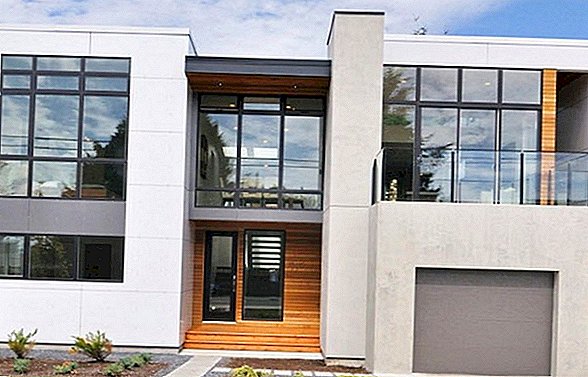
- Polymer sand synthetic stones called torn for their uneven surface and decorative appearance. This is the most durable imitation of stone finishes, as it is made from plastic polymer, which means it is strong in impact and chipping. This finish is quite difficult to care because of the texture surface.
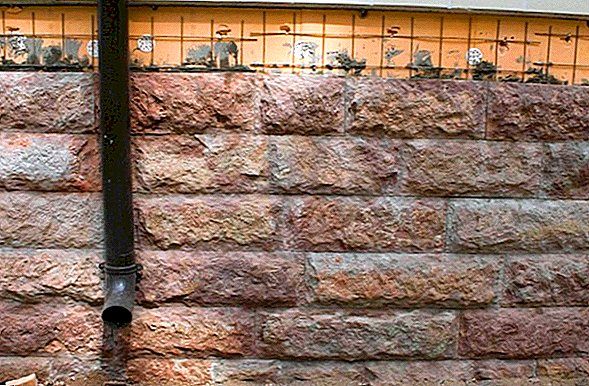
Important! Installing a ventilated facade significantly saves the future costs of heating a house. When lining the clapboard on top of the frame, heat loss is reduced by 40%, and when finished with hollow ceramic bricks, the insulation increases by almost 70%.
Ventilated facades of porcelain
This is not so much a material as a unique technology, according to which the cladding material is attached not to the wall itself, but to a light metal frame.
This installation creates an additional air cushion between the wall and the finish. The house becomes much warmer due to air insulation. This is a breathable finish that does not accumulate condensate, protects against fungi, mildew.
Porcelain can be installed even in winter, as it does not respond to weather conditions and does not need additional maintenance after installation. Tiles can have hidden and visible fasteners, different size and texture.  Properly installed, they perform the function of the outer wall and have almost forty years of service life. Due to the smooth surface, ventilated facades are practically not contaminated, and, if necessary, are easy to clean. It is a durable material that is not covered by cracks from mechanical and temperature effects.
Properly installed, they perform the function of the outer wall and have almost forty years of service life. Due to the smooth surface, ventilated facades are practically not contaminated, and, if necessary, are easy to clean. It is a durable material that is not covered by cracks from mechanical and temperature effects.
We advise you to read about how to build a bathhouse, a shed, a cellar in the garage, a veranda, as well as how to make a gazebo and a sofa out of pallets, a summer shower, a wooden barrel.
Wood paneling
Among the varieties of wood paneling, the most popular are the paneling, the previously mentioned wooden block house, HPL panels, and also planken.
Did you know? For house blocking houses, yellow pine is most often used. This breed of wood is particularly durable and at the same time elastic, therefore it is widely used in shipbuilding since the time of Peter I for the production of specific parts of the mast on the mainmast.
- Clapboard - inexpensive and reliable material. It is made of alder, spruce, pine in the form of plates with grooves.
 Lining is four classes, which is divided depending on the presence of eyes, resin bags, spots and knots. After special treatment it becomes insensitive to dampness, the influence of parasites and temperature changes. It is a relatively lightweight material that is easy to assemble and does not deform during shrinkage. Lining gives excellent heat and sound insulation, durable, does not need painting and frequent washing. The facades decorated with this natural material look stylish and expensive.
Lining is four classes, which is divided depending on the presence of eyes, resin bags, spots and knots. After special treatment it becomes insensitive to dampness, the influence of parasites and temperature changes. It is a relatively lightweight material that is easy to assemble and does not deform during shrinkage. Lining gives excellent heat and sound insulation, durable, does not need painting and frequent washing. The facades decorated with this natural material look stylish and expensive.
- Planken can be installed on the facade both horizontally and vertically.
 It is a narrow (up to 12 cm) thin strips. Moisture-resistant material for plating, which has a low thermal conductivity. It is mainly produced from larch, oak and pine.
It is a narrow (up to 12 cm) thin strips. Moisture-resistant material for plating, which has a low thermal conductivity. It is mainly produced from larch, oak and pine.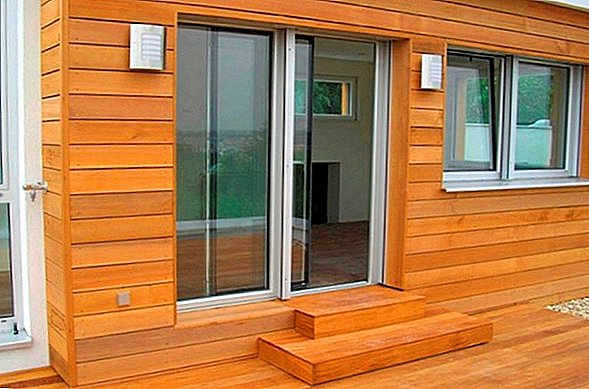
- HPL panels - The most curious representative of the woodwork, as it is made from sheets of craft paper and glue. This material is also called HPL-laminate. These are ultra-durable and ultra-light moisture-proof panels that do not fade in sunlight and do not form cracks. It is simple to look after such panels thanks to their smooth surface, besides they possess dirt-resistant properties.
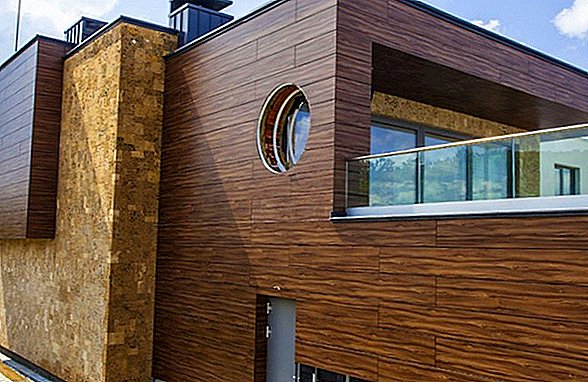
Finishing the facade of a wooden house
It would seem that a wooden house is a self-sufficient construction, and it does not need to be sheathed. In fact, in the absence of proper care, construction wood quickly loses its aesthetic appearance, while maintaining its physical properties. Finishing a wooden house allows him to return the look of the new structure and extend the life of the entire structure.
If you plan to process a new house, then first begin soaking it with water-repellent impregnation or stain. They are colorless and coloring. Four to five layers of such a coating will save the house for a long time from the destructive effects of the external environment.
The next finish is plaster. Construction plaster fits well on the wooden base of the facade, and the second layer of decorative coating will refresh the old walls. Plaster provides for the addition of stone chips or inclusions of glass, which will help to further decorate the house.
Video: finishing the facade of a wooden house stone
Important! In the manufacture of siding, all manufacturers use the same basis, so the price of this finishing material is governed exclusively by the seller’s appetites. Expensive siding is almost no different from cheap.
Suspended ventilated facades are another way of covering suitable for a wooden house. A metal frame is fastened to the wooden walls, which serves as the basis for the facing stone, brick or timber.
Siding siding will be a budget option for a breathable facade and will save you from having to sand and repaint the house every few years. The decoration of the facade of a private house is used to improve its aesthetic characteristics and protect bearing walls from the effects of weather conditions.
To choose a material that is suitable for finishing, one must be guided not only by its price, but also by other important indicators, such as strength, durability and ease of maintenance.  Natural and synthetic materials for finishing facades have different physical characteristics and you can start purchasing them and covering the house only after consulting a specialist.
Natural and synthetic materials for finishing facades have different physical characteristics and you can start purchasing them and covering the house only after consulting a specialist.
Consider the load on the foundation, the climatic conditions of your strip and your ability to care for your home. Only then will your home receive a reliable “fur coat” that will protect its bearing walls and will delight you for many years.
Reviews from the network




















 Lining is four classes, which is divided depending on the presence of eyes, resin bags, spots and knots. After special treatment it becomes insensitive to dampness, the influence of parasites and temperature changes. It is a relatively lightweight material that is easy to assemble and does not deform during shrinkage. Lining gives excellent heat and sound insulation, durable, does not need painting and frequent washing. The facades decorated with this natural material look stylish and expensive.
Lining is four classes, which is divided depending on the presence of eyes, resin bags, spots and knots. After special treatment it becomes insensitive to dampness, the influence of parasites and temperature changes. It is a relatively lightweight material that is easy to assemble and does not deform during shrinkage. Lining gives excellent heat and sound insulation, durable, does not need painting and frequent washing. The facades decorated with this natural material look stylish and expensive.
 It is a narrow (up to 12 cm) thin strips. Moisture-resistant material for plating, which has a low thermal conductivity. It is mainly produced from larch, oak and pine.
It is a narrow (up to 12 cm) thin strips. Moisture-resistant material for plating, which has a low thermal conductivity. It is mainly produced from larch, oak and pine.

